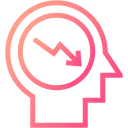Breath, Body, and Pen Working Together
Inhale for four counts, hold for four, exhale for four, hold for four—while drafting a gentle paragraph. Let your words match the pace. This pairing often steadies restless thoughts. Comment if you notice your handwriting slowing as your breath settles into the pattern.
Breath, Body, and Pen Working Together
Gently tense and release one muscle group at a time, then write a sentence that ends with the release. The physical cue mirrors mental letting go. Tell us which muscle group brought the biggest relief, and subscribe for more body-aware nighttime journaling practices.






